
Sphenoiditis is a pathological process characterized by inflammation of the mucous membrane of the sphenoid sinus. It is located deep in the base of the skull and is concentrated near important structures - carotid artery, optic nerves, pituitary gland. If you do not start treating the disease in time, it can result in numerous complications.
Contents of
- 1 Types of
- 1 Types of
- 1 Types of
- 3 How
- 4 is diagnosed Why this disease occurs
- 5 Treatment of
- 5.1 Surgical therapy
- 5.2 Non-surgical treatment
- 5.3 At home
- 6 Reviews
- 1 Types of
Species
Sphenoiditis is distinguished by two types of flow:
- Acute.The disease is characterized by acute pain, which is concentrated in the nape of the neck, rising temperature, difficult breathing, strong discharge. The reason for the development of acute sphenoiditis lies in the penetration into the body of viruses and bacteria.
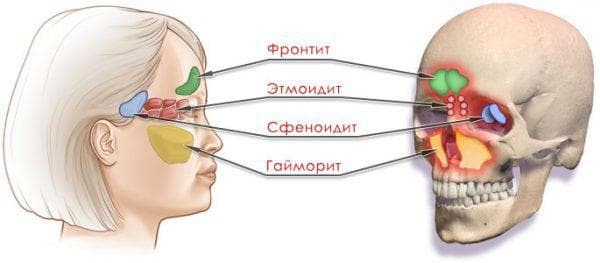
On photo-acute sphenoiditis
- Chronic .It can proceed in two stages - remission or exacerbation. Recognize chronic sphenoiditis can be on the same symptoms as pain in the nape of the aching character, raising the temperature to 37 degrees, highlighting purulent nature, impaired vision, unpleasant odor. As for the causes of the development of the disease, it is most often congenital or acquired deformities of the nasal septum. Not the last role is assigned to weak immunity, and also to the end not cured cold. Chronic sphenoiditis is the result of untimely or incorrect treatment of an acute form of pathology.

On the photo-chronic sphenoiditis
Sphenoiditis is distinguished and localized to:
- left-sided - the left side of the nasal cavity is affected;
- right-sided - the right side of the new cavity is struck;
- bilateral - the lesion is applied to both sides of the nasal cavity.
The form of the disease is classified into the following types:
- exudative - purulent and catarrhal;
- productive - polypous and parieto-hyperplastic.
The origin of sphenoiditis can be :
- Traumatic .It occurs on the background of acquired or congenital nasal injury.
- Viral .On the formation of this type of disease affects a certain virus, which penetrated the body.
- Bacterial is the cause of the development of bacteria of various origins.
- Fungal - the reason for the development of sphenoiditis lies in the penetration of the fungal infection into the body.
- Mixed .The disease can occur for all of the above reasons.
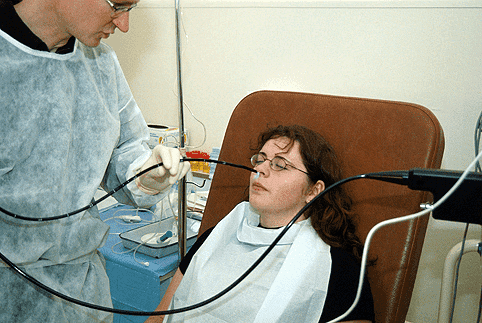
In the photo-treatment of chronic sphenoiditis
All these sphenoiditis types require increased attention, because for each of them the doctor must choose his own treatment.
Symptoms and signs of
In many patients who have been diagnosed with the presented ailment, the following symptoms were observed:
- Pain in the head .It can affect various areas of the head - the temple, the darkness, the back of the head. Unpleasant odor or odor. It arises because of the presence of an inflammatory process in the olfactory area.

On the photo- headache
- Burning sensation in the nasopharynx. The cause of the formation lies in purulent clusters, which flow down the walls of the nasopharynx.
- Formation of unilateral pharyngitis.
- Severe visual impairment. This suggests that the inflammation struck the optic nerve.
- Drowsiness, apathy, temperature rise.
These symptoms interfere with the patient's normal life, so it is important to remove the cause of the pathology in time, because of which all these signs have arisen.
How is the diagnosis of
? The first thing the doctor does is to examine the patient and ask him about the symptoms that they visit. But only for the statement of the final diagnosis of one external examination is not enough. Therefore, the doctor decides to conduct an additional study.
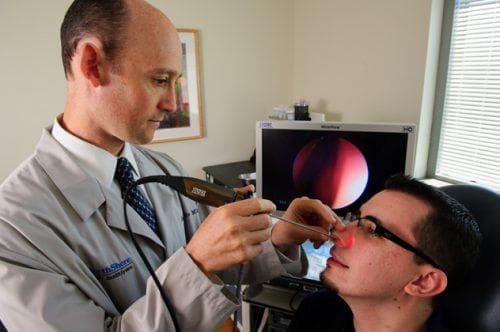
In the photo-diagnosis of sphenoiditis
In this case, nasal endoscopy can be prescribed. But as practice shows, in 50-60% this method of diagnosis does not reveal a pathological process. An ordinary x-ray of the skull gives little information and is a useless method of diagnosis. For accurate diagnosis, it is necessary to conduct such diagnostic methods as computed tomography or magnetic resonance imaging.
Why this disease occurs
Respiratory viruses and bacteria can affect the development of sphenoiditis, among which staphylococci and streptococci, a hemophilic infection and a causative agent called Moraxella catarrhalis are widely prevalent. In addition, pathology can identify several types of harmful microorganisms - fungi, viruses and bacteria.
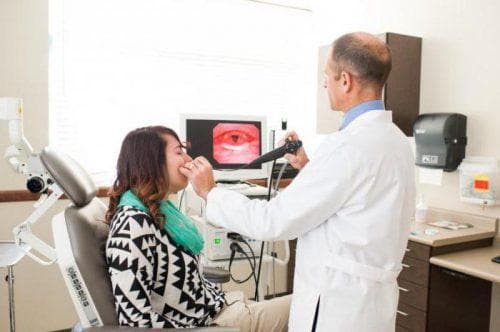
On the photo - diagnosis of sphenoiditis
To the underlying factors of the development of sphenoiditis can be attributed:
- small size and narrow form of the sinus;
- narrow sinus sinus;
- presence in the cavity of the sinus of additional partitions;
- curvature of the nasal septum, which is why the cochlear decreases;
- polyp or cyst in the sphenoid sinus;
- presence of foreign bodies.
If the inflammation of the mucosa of the sphenoid sinus occurs very often and the outflow of pathological fluids is disturbed, then the acute form of the pathology becomes chronic. In addition, a chronic ailment occurs when the skull's skull structures are affected by a different infection.
 Why there is a strong swelling of the nasal mucosa, and what the main reasons can be for this, is described in this article.
Why there is a strong swelling of the nasal mucosa, and what the main reasons can be for this, is described in this article.
It will also be interesting to learn about why scribbling in the nose, and how to deal with this problem.
Why nasal congestion does not take 2 weeks, and what medications will help with this problem to cope, is indicated here: http: //prolor.ru/n/ lechenie-n / ne-proxodit-zalozhennost-nosa-chto-delat.html
How is folk remedies treated with mucosal edemanose, and why this problem occurs, is described in great detail in this article.
Treatment of
Therapy of sphenoiditis is complex. It is important to eliminate not only the symptoms of the disease, but also the cause that has affected its development.
Surgical therapy
The most gentle method of treating sphenoiditis is the endonasal dissection of the affected cavity. The operation is performed under local anesthesia. There is excision of part of the middle shell of the nose, and after the opening of the cell of the latticed bone, which borders on the front wall of the sphenoid bone.
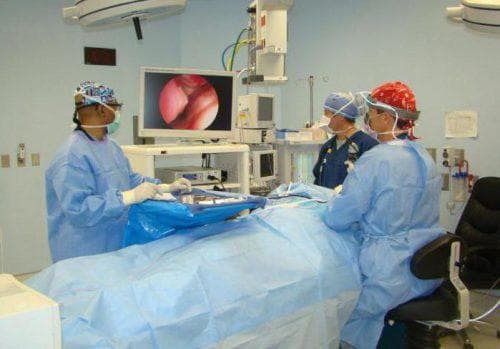
In the photo, surgical treatment of sphenoiditis
. In the wall it is performed by breaking, increasing the diameter of the hole so that the doctor can visually inspect and perform the necessary manipulations in the sphenoid sinus. For these purposes, the doctor uses an endoscope, at the end of which there is a small camera. Thanks to her, the specialist will be able to monitor the entire process and visually assess the condition of the sphenoid sinus.
After the access to the affected sinus has been discovered, the doctor will be able to remove polyps or areas of hypertrophied mucosa. Operative treatment ends with the washing of the sinus with medicinal solutions.
Non-surgical treatment of
If sphenoiditis is at an early stage of development, then it lends itself to non-surgical therapy, which involves the following methods:
- Antibiotics .With the help of antibacterial drugs, it is possible to influence a number of pathogens of the disease. Effective are such drugs: Amoxicillin( and here's how to use antibiotics for a cold Amoxicillin, described in this article) Cephaloridine, Roxithromycin, Cefotaxime( And here's how to do pricks with maxillary sinusitis Cefotaxime, indicated in this article) Cefazolin. To apply antibiotics of directional action it is possible only after the results of bacterial diagnostics directed on detection of the causative agent of an ailment have been received.
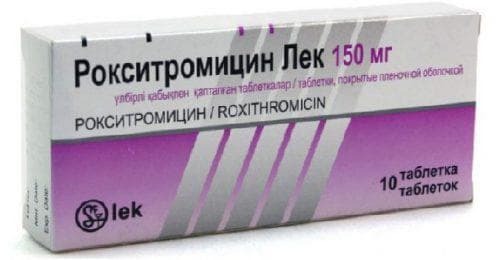
On photoxithromycin for the treatment of
- Anti-inflammatory drugs. To remove inflammation and improve the condition of the patient, a drug such as Fenspiride may be prescribed.
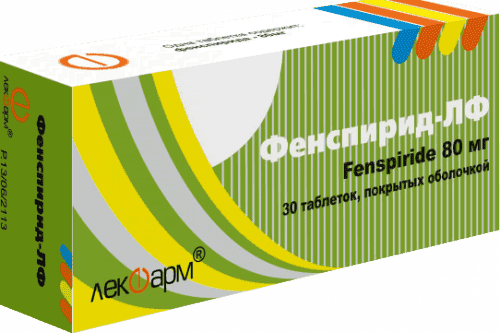
On the photo-fenspiride against inflammation
- Antihistamines - Ebastine, Sebhydroline, Chloropyramine.
- Vasodilating agents .When treating the initial stage, you can use drugs such as Ephedrine, Dimethinden with Phenylephrine. If after a week of taking the proper effect is absent, the doctor decides on the appointment of Nafazolin, Oksimetazolin, Xylometazoline.
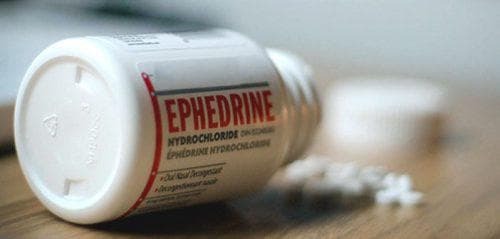
On the photo - ephedrine for the vessels of the nose
- Physiotherapy. For the treatment of sphenoiditis, a number of procedures may be used, among which endonasal electrophoresis is left with antibacterial drugs of the penicillin series. You can get excellent results with helium-neon laser radiation therapy. If there is an acute sphenoiditis, then it is advisable to perform lavage with the help of the sinic catheter Yamik.
On video treatment of sphenoiditis:
At home
At home treatment of sphenoiditis, nose drops, rinsing, tampons with ointments are used. All these funds must be used exclusively in a warm form. At home, you can treat sphenoiditis in the following ways:
- Drops .To fulfill them, you need potatoes. To do this, you just need to clean it, wash it and squeeze out the juice. You can also drip the following types of oils: menthol, camphor and eucalyptus. Apply 1 drop to each nasal passage. But what drops of pain in the ears with the cold are the best, will help understand this information.
- Washing .For these purposes, use curative decoctions of such herbs as field horsetail, kiprej, chamomile, Ledum.

On the photo-washing of the nose
- Turpentine bath. It is necessary to dissolve white turpentine in warm water and take a bath in it for about 10 minutes. At the same time, the water level in the bathroom should be lower than the heart area. After water procedures, drink hot tea and lie under a warm blanket. The next procedure should be performed after 3 days, until all the symptoms of sphenoiditis have gone.
Why exacerbation of chronic tonsillitis occurs during pregnancy, and what can be done with this problem, is indicated in the article.
Why an adult has brown snot from the nose, and what medications will help with this problem, is described in detail in this article.
Reviews
- Anastasia, 34 years old : "I have been diagnosed with sphenoiditis 2 years ago. I was tormented by terrible pains in the back of my neck, it was difficult to breathe, I could not sleep properly, and I also have a full life. When I went to the hospital, after the diagnosis the doctor prescribed a complex treatment for me, which included antibiotics, antihistamines, and nose washing. The duration of therapy was 1 month. After that, I began to feel much better, and all the unpleasant symptoms quickly left me. "
- Antonina, 24 years old: "Sphenoiditis occurred in the presence of streptococcal infection. The doctor included in the therapy scheme not only antibiotics, but also anti-inflammatory drugs. I took Cefotaxime and Fenspiride. And at home, I was washing the nose with a decoction of chamomile and making tampons from the ointment. The duration of treatment was 1.5 months, because I did not dare go to the hospital for a long time, as a result of which sphenoiditis was at the last stage of development. "
- Andrei, 42: " I, unfortunately, delayed my visit to the doctor for a long time, as a result of which acute sphenoiditis passed into chronic. Now I have an exacerbation several times a year. Then I'm taking antibiotics, anti-inflammatory drugs, dropping vasoconstrictive drops into my nose. But in the remission phase I do every day washing the nose, dripping menthol oil. Such measures allow me to alleviate the symptoms when exacerbating or even prevent the development of this stage. "
Sphenoiditis is a disease that is of infectious origin. It must be treated without fail and immediately after the first signs were found. If care is taken against one's health, serious complications can arise, one of which is a decrease in vision.
